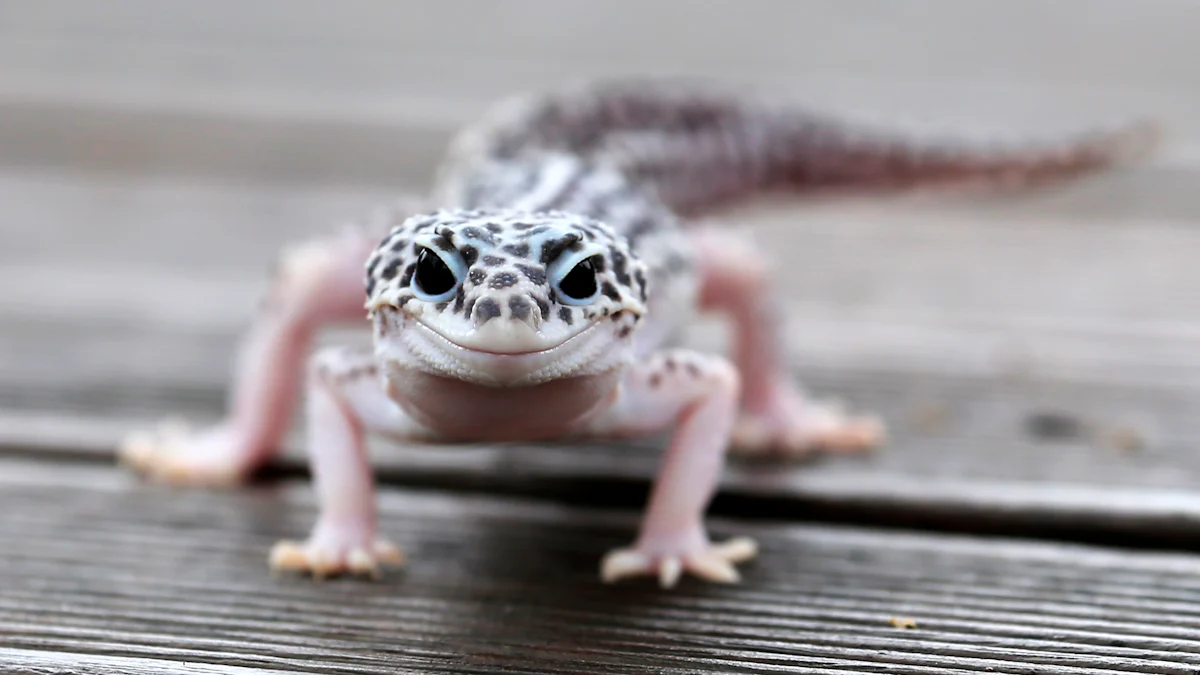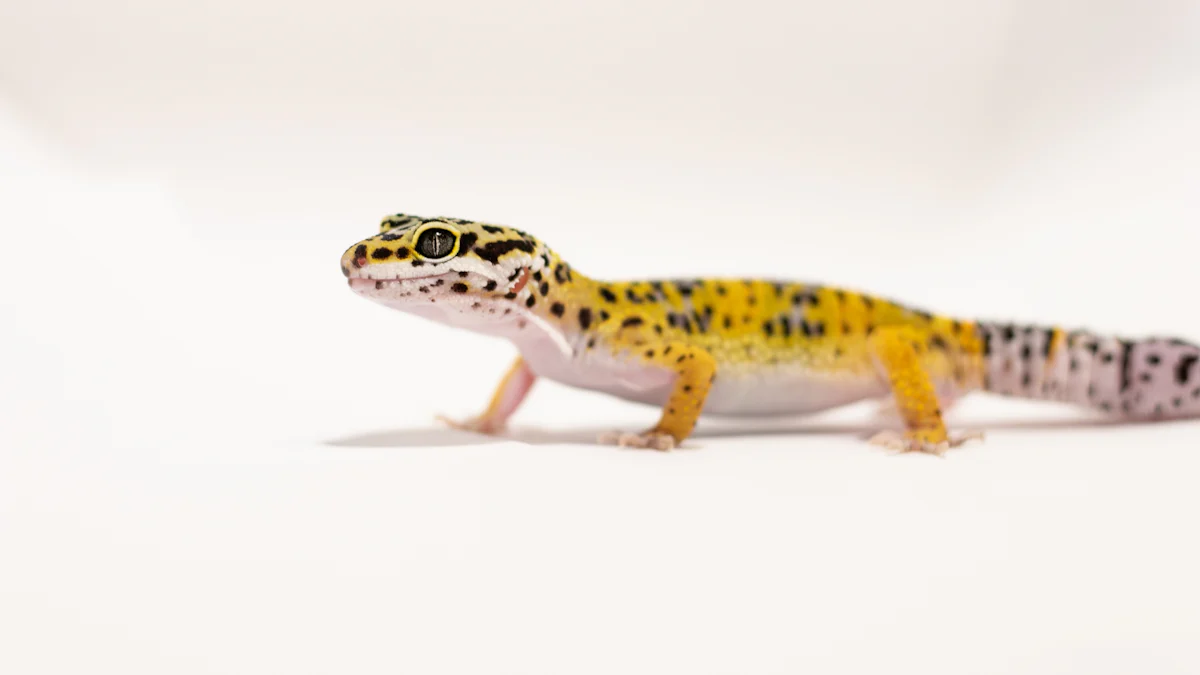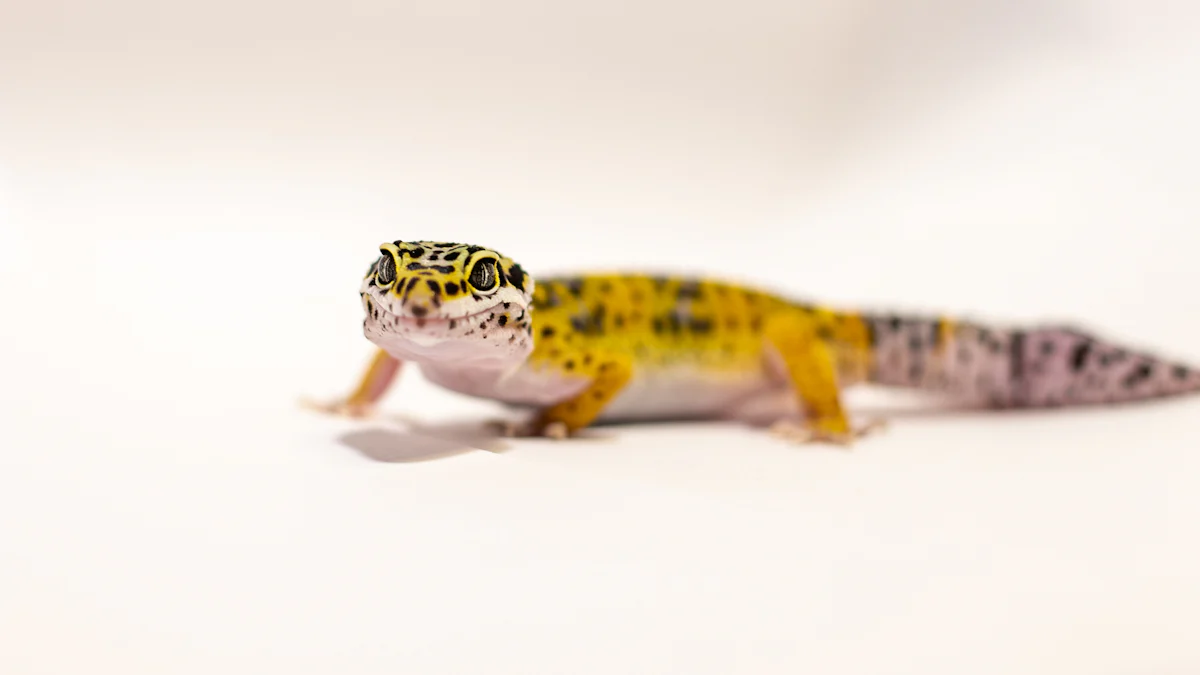
How many leopard gecko mealworms should you feed your leopard gecko? This question often puzzles gecko enthusiasts. Feeding the right amount of leopard gecko mealworms is crucial for your gecko’s health and happiness. You should consider factors like age, size, and activity level. For instance, a general rule suggests offering two insects per inch of your gecko’s length every other day. Baby geckos might need 6-10 small leopard gecko mealworms every other day. Remember, each gecko is unique. Observe your pet and adjust the leopard gecko mealworm quantity as needed to ensure they thrive.
Key Takeaways
- Feed adult leopard geckos 5 to 10 mealworms every other day to maintain their health and prevent overfeeding.
- Baby leopard geckos require 6 to 10 small mealworms daily to support their rapid growth and development.
- Introduce a variety of insects, such as crickets and dubia roaches, to provide a balanced diet and prevent nutritional deficiencies.
- Monitor your gecko’s behavior and adjust feeding amounts based on their activity level to ensure they remain healthy and active.
- Dust mealworms with calcium and vitamin supplements every other feeding to support strong bones and overall health.
- Maintain a proper temperature gradient in your gecko’s habitat to aid digestion and prevent health issues related to feeding.
- Regularly check your gecko’s weight and health to catch any signs of overfeeding or dietary issues early.
Recommended Quantity of Leopard Gecko Mealworms

Adult Leopard Geckos
Suggested number of mealworms per feeding
Feeding your adult leopard gecko the right amount of mealworms is crucial. Typically, you should offer about 5 to 10 mealworms per feeding session. This quantity ensures they receive enough nutrition without overfeeding. Remember, leopard gecko mealworms should be of appropriate size, roughly the same width as the space between your gecko’s eyes. This helps prevent choking and ensures easy digestion.
Adjustments based on gecko size and activity level
Not all geckos are created equal! Some might be more active, while others prefer lounging around. If your gecko is a little athlete, consider increasing the number of mealworms slightly. On the other hand, if your gecko enjoys a more sedentary lifestyle, you might want to stick to the lower end of the mealworm count. Always observe your gecko’s behavior and adjust accordingly. A happy gecko is a healthy gecko!
Baby Leopard Geckos
Suggested number of mealworms per feeding
Baby leopard geckos have different needs. They require more frequent feedings to support their rapid growth. You should provide them with 6 to 10 small mealworms every day. These tiny creatures are growing fast, and they need all the energy they can get from those delicious mealworms.
Importance of frequent feeding for growth
Frequent feeding is essential for baby geckos. Their bodies are developing, and they need consistent nutrition to grow strong and healthy. By offering leopard gecko mealworms regularly, you ensure they get the necessary nutrients. Keep an eye on their growth and adjust the feeding schedule if needed. A well-fed baby gecko will grow into a robust adult, ready to explore the world!
Feeding Frequency for Leopard Geckos
Feeding your leopard gecko the right amount of mealworms is just one part of the equation. You also need to know how often to feed them. Let’s dive into the feeding frequency for both adult and baby leopard geckos.
Adult Leopard Geckos
Recommended feeding schedule
For adult leopard geckos, a consistent feeding schedule is key. You should feed them every other day. This routine helps maintain their energy levels and keeps them healthy. Offer about 5 to 10 mealworms per session. This amount provides the necessary nutrients without overloading their system. Remember, each gecko is unique, so observe your pet and adjust as needed.
Signs of overfeeding
Overfeeding can lead to some unpleasant consequences. If your gecko starts regurgitating its food or appears lethargic, you might be giving it too much. ReptiFiles, a trusted source in leopard gecko care, warns that overfeeding can cause these issues. To prevent this, avoid feeding fatty insects like waxworms and butterworms. Stick to a balanced diet with leopard gecko mealworms as a staple.
Baby Leopard Geckos
Recommended feeding schedule
Baby leopard geckos have different needs. They require daily feedings to support their rapid growth. Offer them 6 to 10 small mealworms each day. This frequent feeding schedule ensures they get the energy they need to grow strong and healthy. Keep an eye on their development and adjust the feeding schedule if necessary.
Monitoring growth and health
Monitoring your baby gecko’s growth is crucial. Regular weigh-ins and visual checks help you ensure they’re on the right track. If you notice any signs of stunted growth or health issues, it might be time to reassess their diet. Providing a balanced diet with leopard gecko mealworms and other nutritious options will help them thrive.
Additional Dietary Options for Leopard Geckos

Feeding your leopard gecko isn’t just about mealworms. A varied diet can make a world of difference in their health and happiness. Let’s explore some exciting dietary options that can spice up your gecko’s menu!
Variety in Diet
Other insects to consider
Leopard geckos love a bit of variety on their plate. While leopard gecko mealworms are a staple, you can introduce other insects to keep things interesting. Consider offering crickets, dubia roaches, or even silkworms. These insects provide different nutrients and textures, making mealtime more exciting for your gecko. Remember, each insect should be appropriately sized—no bigger than the space between your gecko’s eyes.
Benefits of a varied diet
A varied diet isn’t just fun; it’s beneficial! Different insects offer a range of nutrients that contribute to your gecko’s overall health. For instance, crickets are high in protein, while silkworms are rich in calcium. By mixing up their meals, you ensure your gecko gets a balanced diet. This variety helps prevent nutritional deficiencies and keeps your gecko active and thriving.
Supplements
Importance of calcium and vitamins
Supplements play a crucial role in your gecko’s diet. Calcium and vitamins are essential for strong bones and overall health. Without them, your gecko might face health issues like metabolic bone disease. Scientific Research Findings: Studies show that dietary supplementation with β-carotene allows sufficient vitamin A storage in leopard geckos. This highlights the importance of providing a well-rounded diet with necessary supplements.
How to properly supplement mealworms
Dusting mealworms with calcium and vitamin powders is a simple way to boost their nutritional value. Before feeding, lightly coat the mealworms with these supplements. This ensures your gecko gets the essential nutrients they need. Make it a habit to dust mealworms every other feeding session. This routine helps maintain a healthy balance of vitamins and minerals in your gecko’s diet.
Common Feeding Issues in Leopard Geckos
Feeding your leopard gecko might seem straightforward, but it can come with its own set of challenges. Let’s explore some common feeding issues and how you can tackle them effectively.
Overfeeding
Symptoms and consequences
Overfeeding your leopard gecko can lead to several health problems. You might notice your gecko becoming lethargic or even regurgitating its food. These are clear signs that your gecko is consuming more than it can handle. Over time, excessive feeding can lead to obesity, which poses serious health risks. A chubby gecko might look cute, but it can suffer from joint problems and a shortened lifespan.
How to prevent overfeeding
Preventing overfeeding requires a keen eye and a bit of discipline. Stick to the recommended feeding schedule and portion sizes. For adult geckos, offer 5 to 10 mealworms every other day. Monitor your gecko’s weight and adjust the feeding quantity if necessary. Remember, a healthy gecko is an active gecko. If your pet seems sluggish, it might be time to reassess its diet.
Health Problems
Vomiting and its causes
Vomiting in leopard geckos can be alarming. It often results from overfeeding or feeding inappropriate-sized prey. Mealworms that are too large can cause digestive issues, leading to vomiting. Stress and sudden changes in diet can also trigger this response. If your gecko vomits, check its diet and feeding routine. Ensure the mealworms are appropriately sized and avoid sudden dietary changes.
Importance of proper temperature and environment
The right environment plays a crucial role in your gecko’s digestion. Leopard geckos need a warm habitat to properly digest their food. If the temperature is too low, your gecko might struggle to process its meal, leading to vomiting or other health issues. Maintain a warm basking spot around 88-92°F (31-33°C) and a cooler area around 75-80°F (24-27°C). This temperature gradient helps your gecko regulate its body heat and aids in digestion.
Veterinarian Insight: Proper dietary supplementation, including β-carotene, ensures your gecko stores enough vitamin A, preventing health issues like epithelial squamous metaplasia. This highlights the importance of a balanced diet and environment for your gecko’s well-being.
By understanding these common feeding issues, you can ensure your leopard gecko stays healthy and happy. Keep a close eye on their diet and environment, and you’ll have a thriving gecko companion!
Feeding your leopard gecko the right amount of mealworms is crucial for their well-being. Remember, adult geckos thrive on 5 to 10 mealworms every other day, while baby geckos need daily nourishment with 6 to 10 small mealworms. A balanced diet is essential. Incorporate a variety of insects like crickets and roaches to ensure your gecko receives all necessary nutrients. Monitor their health and adjust feeding as needed. By doing so, you ensure your gecko remains healthy and happy, ready to explore their world with vigor.
FAQ
How many mealworms should I feed my leopard gecko?
You should offer your leopard gecko a variety of live insects, including crickets, roaches, and waxworms, alongside mealworms. Generally, feeding your gecko 20-30 mealworms daily works well. Establish a routine by feeding them at the same time each day. This helps your gecko anticipate mealtime and maintain a healthy eating pattern.
What are the key food groups for leopard geckos?
Insects form the primary diet for leopard geckos. Ensure these insects consume a high-calcium and vitamin A diet before feeding them to your gecko. This process, known as gut loading, proves more effective than merely dusting the insects. Lean insects like crickets, dubia roaches, hornworms, and soldier fly larvae provide essential nutrients. Fatty insects, such as mealworms, superworms, and waxworms, offer additional variety.
Can I feed my leopard gecko only mealworms?
While mealworms can be a staple, it’s crucial to include other insects in your gecko’s diet. A varied diet ensures your gecko receives all necessary nutrients. Crickets and roaches, for example, offer different proteins and vitamins that mealworms alone might not provide. Think of it as a balanced meal plan for your gecko!
How do I know if I’m overfeeding my leopard gecko?
Watch for signs like lethargy or regurgitation. These indicate overfeeding. Stick to recommended portion sizes and observe your gecko’s behavior. If they seem sluggish, consider reducing their mealworm intake. Remember, a healthy gecko is an active gecko!
Why is gut loading important for leopard geckos?
Gut loading involves feeding insects a nutritious diet before offering them to your gecko. This method ensures your gecko receives essential nutrients, particularly calcium and vitamin A. Gut loading enhances the nutritional value of the insects, supporting your gecko’s overall health and preventing deficiencies.
How often should I dust mealworms with supplements?
Dust mealworms with calcium and vitamin powders every other feeding session. This routine helps maintain a healthy balance of vitamins and minerals in your gecko’s diet. Proper supplementation supports strong bones and prevents health issues like metabolic bone disease.
What should I do if my leopard gecko refuses to eat?
If your gecko refuses food, check their environment. Ensure the temperature is suitable, as a cold habitat can affect appetite. Also, try offering different insects to spark their interest. If refusal persists, consult a veterinarian to rule out health issues.
Are there any insects I should avoid feeding my leopard gecko?
Avoid feeding insects that are too large or fatty, like waxworms and butterworms, in excess. These can lead to obesity and digestive issues. Stick to appropriately sized insects, no larger than the space between your gecko’s eyes, to ensure safe consumption.
How can I monitor my leopard gecko’s health?
Regular weigh-ins and visual checks help track your gecko’s health. Look for signs of stunted growth or lethargy. Adjust their diet and environment as needed. A balanced diet and proper habitat conditions contribute to a thriving gecko.
What role does temperature play in my gecko’s feeding habits?
Temperature significantly impacts your gecko’s digestion. Maintain a warm basking spot around 88-92°F (31-33°C) and a cooler area around 75-80°F (24-27°C). This gradient helps your gecko regulate body heat and aids digestion, ensuring they process their meals efficiently.


